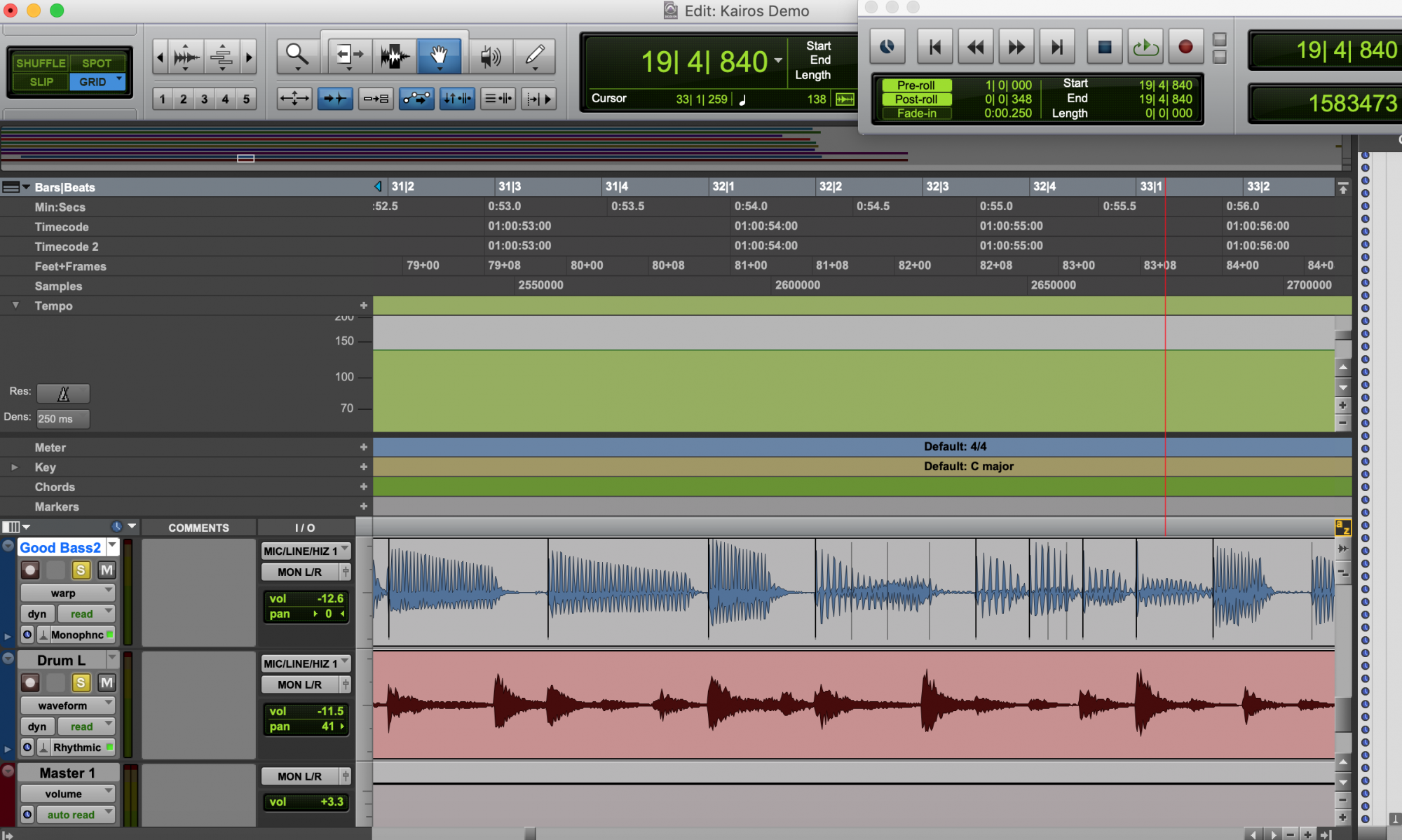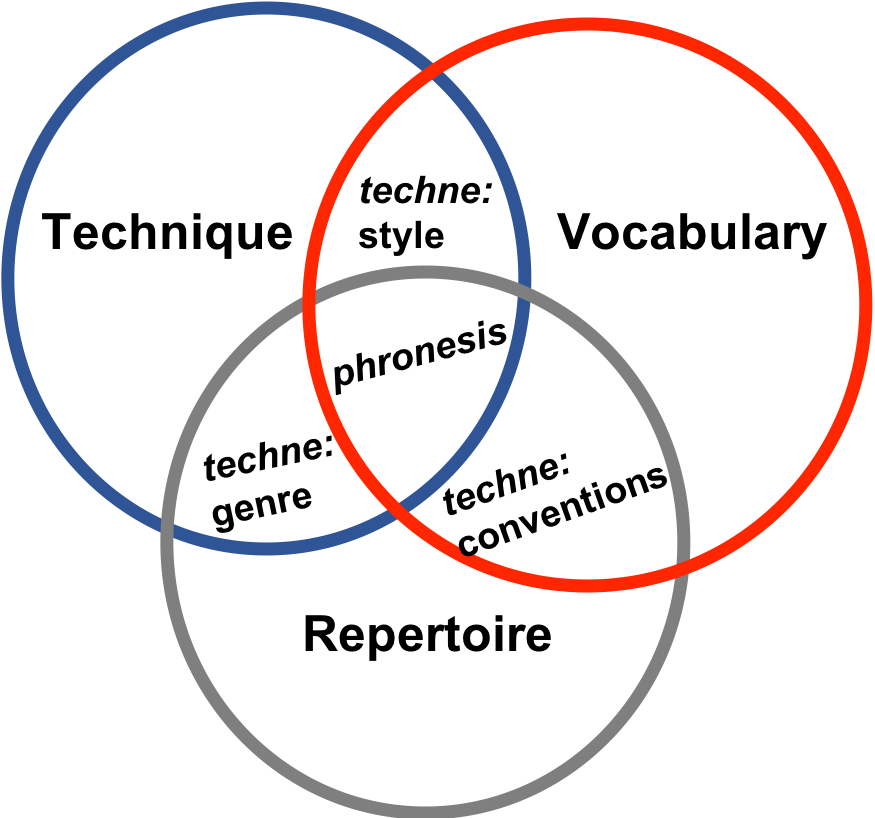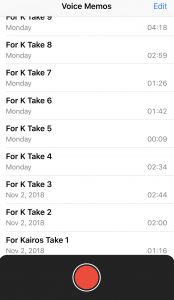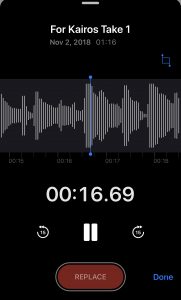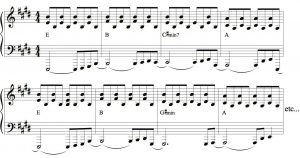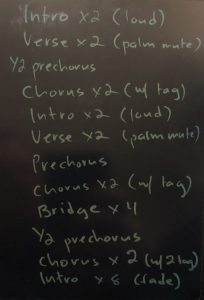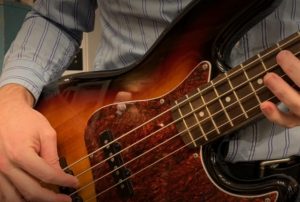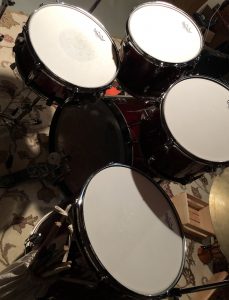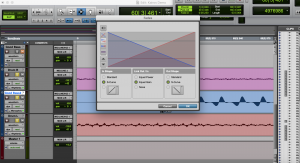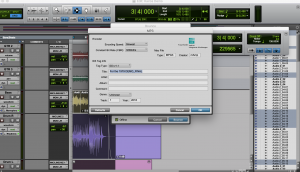Our position as learners in this project afforded us a chance to
reflect, as we often ask our students to do, on the composing decisions
we made and how they influenced our learning. We try, in the dialogue
below, to look ahead to understand how our work on this project helped
us in future composing situations across media.
Bill: I found it interesting
that you saw my inventional work for the article—creating a kind of
heuristic as a frame for invention of the core theoretical contributions
of the article—as a new way of working for you. Could you say more
about that and describe how it asked you to practice differently, like
did it help you build repertoire? New technique? Extend your vocabulary?
Ben: One of the ways I found
the model new for me is that, like many practitioners, I never stopped
to really think about my process. I just worked. What the model invited
me to do was spend more time trying to explain what my work looks like
at the level of practice. So, for example, after writing the verse and
the chorus, I spent some time generally thinking about the arrangement
of the song. This is where I drew from my repertoire of knowledge about
pop songs in general, which tend to average around 3 minutes in length.
My first attempt was a bit longer at 4 minutes, but by playing with the
arrangement a bit, I was able to cut the first 30 seconds and then later
another 30 seconds because I sped the track up from around 118 beats per
minute (bpms) to 136 bpms. This was also partially because I began
thinking about my technique, that is, how was I going to actually play
the song? I knew it was a pop rock song, but I was thinking about pop
like R.E.M. and Pixies used to do it, and some more recent stuff like OK
GO, The Kooks, and The Fratellis… which all seemed to have more of a new
wave indie rock feel rather than an alternative rock feel, and so that
was a conscious decision to speed up the song to sound poppier. I was
then thinking both about genre and style too, as I wrote the song a half
step low on an acoustic and then tuned it to standard and sped it up
again on the electric. This last part, about the tuning, was more or
less about my vocabulary, because I recognized, once I had the song
sussed out, that I had to explain it to you, Bill, because you were
going to play on it too.
[Bill laughs]
Ben: So, I have my
own vocabulary for thinking about songs when I'm writing, and it isn't
rooted in words necessarily—more like shapes, sizes, colors, and
emotions—but I realized that I'd have to find a way to explain those
shapes and colors to you. In all my previous experiences, that worked by
breaking the song down to parts like A, B, C and saying how many times
to do each part.
All this to say, I've never actually
thought about my songwriting practices so concretely. I just do them. I
just make something where the shapes, sizes, colors, and emotions seem
to fit together. I let my ear and intuition lead. The model showed me
that I have processes that are more practical than I actually thought
they were. It also showed me that space is an important part of my
practice. We chatted about this over text the other day as we were
writing.
I feel like we need a term for taking
a break as part of invention—to create enough distance that something
becomes new again. You call it a time to recover, and note it is where
growth occurs. The term we settled on, interval rest, seems to relate to
Casey Boyle's (2016) idea of "serial practice" where growth or
improvement is not necessarily linear.
How do you see interval rest
connecting to the model you developed? Did you try taking time away?
What did that time do to your understanding of the song and your ability
to write a bass line?
Bill: I take the idea of a
rest interval very literally and it comes from my experience with
athletic training where you come to understand that a workout is a way
to apply adaptive stress to your body. You are trying to subject
yourself to something that your body is so unprepared for that it will
change to be better prepared the next time.
When you see things this way, you also understand that you don't get better during the workout, you just suffer.
[Ben laughs]
Bill: You get better when you recover from it. And that takes time. And… as you get older, it takes longer too!
So, you can teach an old dog new tricks. It just takes a lot more time for the old dog!
[Ben laughs]
Bill:: For this song,
I think I did need some time off. Not so much to refine technique, per
se, but to get to a higher level of understanding than notes-in-a-row
about how I wanted the bass line to actually work. After our first
session where we tried to do a little recording, which was really still
where I was trying to figure out ideas and get a sense from you about
what I should be doing, I had almost nothing decided for sure. It was
humbling for me because I felt I might have wasted your time, but I just
couldn't go faster or try things out. I didn't have enough of any of
the three things—vocabulary, technique, or repertoire in this
particular case (with this style of pop song) to be able to improvise
and then record. So I had to work things out a bit more ahead of time.
If this were a piece of writing I would say I need a really strong
outline to work from I can't just sit down and count on a lot of
experience with the macro or micro structures of the genre to carry me
through. If it were a genre I knew more about, maybe I could have. Like
if you'd have said let's make this a funk groove or a blues, or
something, maybe I'd have had more to go on. But mostly I left that
first recording session thinking I had homework to do! Or I left that
first recording session thinking I got to get in the shed and work this
out.
Ben: One of the other
rhetorical concepts we talked about was rehearsal as an essential
component of revising. The basic idea was this: through playing the song
over and over again, we learned where it could improve or change. We
discovered its possibilities. What is your take on rehearsal as a kind
of revision process? Especially considering we just finished recording
the song and rehearsal was kind of a part of that too, right?
Bill: Yeah, well, first I
think of rehearsal as distinct from the kind of workout—practice,
whatever you might call it—that you do to create adaptations. A
rehearsal is more of a deliberate repeat, where "deliberate" means you
are engaging in doing the thing again to try to be attentive to
polishing up a performance in some way or like you were saying, maybe
trying to find a different performance. This is usually done with a
future performance in mind: a specific time, place, audience, etc. For
recording I guess it is a future audience. Practice is not always like
that. Sometimes I practice to create that adaptive stress, not with any
specific performance in mind but to change my body in a way that will
make a future performance possible.
So, can I ask you another question about this whole composing experience?
Ben: Yes, of course.
Bill: Because it is
fascinating for me. When it comes to making the song, which, you know
I've never done, I want to ask you… I felt like I was working at the
very edge of my ability, like all of the time, in all of the model's
areas: technique in terms of performance, trying to get that right, but
specifically performance for recording, not making a lot stray noises,
and then all the decisions that comprise the techniques of recording
were completely new. I was working on repertoire in terms of pop songs
of a certain era ('90s-ish), and then vocabulary which I could fill a
page describing. But what I want to ask you is what if anything, do you
feel like you might have learned from this particular process? And did
you set this challenge for yourself in order to try learn something
specific?
Ben: Well, I used to think that
when I wrote music I worked exclusively in and with sound. Now I would
think of myself as a practitioner of sound, so to speak, but you know I
was a musician more or less, and that's how I felt most comfortable,
picking up an instrument and playing and seeing what would happen. Today
I realize that's not entirely true. Much of what I make relies on other
kinds of genres, a lot like professional writers. Like the project
managers I've studied, for example, some of those genres people will
never see because they are part of a staging process. All the
spreadsheets. The to-do lists, you know. The different kinds of boards
they assemble to make sure that we can visualize work. That is all a
part of a staging process, and for me, this is the kind of visualization
of the song that I made for you.
Bill: Oh yeah, so I could figure out the parts.
Ben: Right. And in your work
with Mark Zachry and Clay Spinuzzi (Spinuzzi, Hart-Davidson, & Zachry, 2006), you called these "helper"
genres, texts put together to help someone do their job. I actually
think those helper genres are no less powerful than the target genres,
or in this case, the song. I needed all those helper genres to make the
song a song. So I'm doing a lot more writing of words on a page and
mapping of concepts visually than I ever really considered.
I also didn't realize how quickly I
toggle back and forth between technologies that help me visualize the
song that I'm writing. So songwriting is already a visual process for me
because I "see" the music so to speak, but spending so much time
thinking about how a smartphone and a computer visualizes sounds, and
how much those visualizations contribute to my decision-making, was
startling. For example, the first version of the song being 4 minutes
and knowing that I wanted to cut that down to 3 minutes or 3 minutes and
30 seconds… The computer told me that—it told me that it was 4
minutes long—it wasn't my ears. I may need to think about whether or
not that's a good thing at some point. And then, seeing how the drums
line up with the bass and guitars, how hand claps and vocals live
together and occupy the same sonic space, and how the digital audio
workstations literally visualize that for an author shows me that no
matter what, sound is always made somehow visual for us—whether by
associating it with records, CDs, playlists, mixtapes, or the printing
of soundwaves on our screens. Even the file name of an MP3 is a kind of
visualization.
So, I'm curious, Bill, how you might
respond to this same question. What do you feel you might have learned
from this particular composing process?
Bill: Oh [Laughs]
Ben: And did you set this challenge for yourself in order to learn something specific?
Bill: Ugh, I
feel like learning overload, I feel like almost everything I did in
making my part of this song is a new lesson, and I really only
contributed a small piece. I'm a little overwhelmed by it, in fact. In a
good way. So I'm not quite sure I really can say all the things I have
learned just yet. But one thing I realized yesterday as I finally got
what I felt like were all the parts of the bass line worked out so that I
could repeat them is that every other time I'd learned a song, I had an
existing song to reference and it acted as a really strong scaffold to
my practice. So I could say "well, there are three bits I have to get
under my fingers: the verse, the chorus, the bridge—whatever" and then
I'd go pick one, listen to that, and start working out how I wanted to
play it on the fingerboard. You know I had some choices but it was all
laid out for me already.
Here, I didn't have that. And, I
mean, first I had to decide how many parts there were and then I had to
figure out, based on the song demo you'd given me to work from—which
had, like, drums and guitar and later the vocals—what I wanted to do.
All of the parts were in flux while I was trying to learn them, and so
the only place the bass part really existed was in my own head! And that
was continuing up until the minute we recorded it.
So, I'd play it one way and kind of
like it or not, and then maybe try something different the next time
through. What I eventually did is if I hit on something I wanted to do
that was at the level, vocabulary-wise, of a note or a phrase I wrote a
few of those, what I would do is I would write them down, make a visual,
so as not to lose them because otherwise I would forget it the next
time through. And I wasn't writing notes like notes on a staff, I mean I
could have done that, but I was writing the letters or a little note to
myself like "descend minor scale from D on the A string"—so I'd just
make a little note right there when I was figuring out "what did I like
about what I played?""
So, the first breakthrough for me
that I would say in terms of learning something was actually something
you had reminded me of a long time ago when we were first working on a
different piece that we wrote and that was the way other songs can be
inspirations without having to be kind of direct quotes, and I realized
the key center of the song and the tempo were close to "Don't Stop
Believin'" by Journey. And so, just for a lark, I played the scratch
track for Leslie at home, and instead of playing the line I'd been
working on I played the Journey bass line just to show her and she
laughed about it. But then, that made me see that I could outline the
chords in the song like a bass player is supposed to do, but I didn't
have to make just a boring pentatonic box—oh and there is another
visual, right? Box on the fretboard.
Ben: [Laughs] Right.
Bill: I could make a
little melody line with more movement than that. So that's how I found
that intro bass riff that I think now becomes a little motif in the
song. And a similar analogy led me to the descending line in the chorus,
except it was "I Want You Back" by the Jackson 5, which has a
descending line in the chorus of it's song too.
Ben: So while you weren't learning other people's songs, you were using other people's songs to make your own!
Bill: Yeah, like I was
thinking about it, and going "Oh you know that descending line might
sound good here." I mean it's a completely different key, different
tempo, nothing really is the same about it except that going down the
scale sounded like an interesting complement to what you were doing
vocally and what you were doing with the rhythm track.
Ben: Right!
Bill: So I want to come back to this learning bit because I'm
fascinating by another thing that you said when we were texting back and
forth, and we were sending these clips—voice memos and so forth. You
noted that the venn diagram that we made for the learning model helps
you to envision the pathway to learning and composing as a kind of
spiral through those various areas.
Ben: Yes!
Bill: And for me, this invoked
a foundational idea in composition studies, really, and in design too,
when you think about it, or UX and that is the idea that the composing
is a recursive process. I haven't really dwelt on the idea of recursion—of a thing recurving back onto itself—as a visual metaphor, but it
certainly is one! So, do you think that it is important to have
something to spiral towards? When we are thinking about learning? Or is it
enough to spin endlessly through those circles or do you have to work
towards something like we did here with the song?
Ben: I think as a metaphor for
learning, spiraling makes more sense to me than scaffolding, even
though I imagine that I do, and I did, in this particular project, both.
One thing I did see is that I tend to separate the song from the
performance of the song, so I suppose I see spiraling to have an end
when you're saying, okay I'm done writing a song, and now that song is
written. At some point you have the components and you just say I'm
gonna call this song good, and move on. But, for me, the performance of a
song is a very different inventional process. Take for example Leonard
Cohen's "Hallelujah," which is an amazing song, but the performance of
it by Jeff Buckley really stuck with me a lot longer than the original
recording by Cohen. The song was the song, with verses, chorus, melody,
time signature, chord progressions, etc.… but the performance of
those elements can vary.
In writing, I think we can do
something similar by separating our ideas from the performance of our
ideas. I think over time we learn to perform ideas better, or that we
have a particular kind of performance we feel better executing. We call
these "moves" or rhetorical moves. In other words, our first take is
rarely our best when we're recording. In this way, I see writing as
largely performative. Sometimes ideas are good, but the performance
isn't right. Sometimes the performance is right, but the ideas are
lacking.
I suppose what I'm getting at is that
we spiral towards some sort of conclusion or ending, but that's mostly
arbitrary in my experience. We continue to refine how we define our
ideas over time as we learn how to perform them for different audiences,
purposes, and situations. And we do that through rehearsal while we are
inventing or discovering ideas, but also while we are thinking about
how to perform the ideas for others.
So, you had some good ideas, Bill, on
how this translated from writing music to composing more broadly.
Explain how you saw this connection.
Bill: Well, I have to credit
you for showing me that it seems now obvious in retrospect… that, you
know, in my life I do write and rewrite the same idea in order to
increase my own understanding of it. I suppose that has always been true
but it was never really very obvious to me. I want to say one more
thing about the song before I go back to this idea about how making the
song reflects on how we learn to compose, but the thing about the song
that I want to say is it does feel to me now like we wrote a song,
although that wasn't true yesterday.
Ben: [Laughs]
Bill: And its also not necessarily true that I feel like we've ever performed the song…
Ben: [Laughs]
Bill: … because we haven't sat
together in a room while you are singing and I'm playing and you're
playing and we've performed it. So it's weird to think about how yeah we
wrote a song but we never performed the song. Maybe that, to a
musician, that's a natural idea, but it's kind of a new concept for me.
But here's one thing that's really true is that it did change my
vocabulary for writing songs, so now I think it's a little more
reasonable that I might one day write a song. Because
building vocabulary, for me, means more than just learning new words or a
new notes or a new kind of scale. It also means consolidating smaller
bits into larger ones and making those available to yourself as
compositional tools. So words and sentences and paragraphs, for
instance, become "sections" of an academic argument, these rhetorical
moves that we can use to lay out a macro-structure for an argument and
that will move the dialogue forward in a given academic discussion. So,
these are the moves you are talking about and we use them all the time
as experienced writers, we're like "We'll do this, then we'll do that…"
We don't strategize about every word we put on the page, though. We'll
say, "We'll have a little lit review here and then we'll go to add a
methods section there."
We do this visually, by the way. Or
at least we use visual formats to facilitate these acts of consolidation
and transposition, is what I want to call them. Think of an outline or a
wireframe, for instance. I could pass you that on a document and it
would function as a kind of gestalt (see Hart-Davidson, 1996), so
you could be like, "okay I'll take this section and you take that
section," and we've done that when we've written other stuff.
Ben: Right. That's true.
Bill: So, for example, how
does this apply for music though? I think notes become larger structures
like chords, chords become chord progressions, and then you can use to
invoke whole genres such as the blues. So, you can learn to play the
individual tones in the minor pentatonic scale on a guitar, it's often
the thing we learn first because its pretty simple to just—every other
fret in a box shape, and we can consolidate those over time by
associate them with a shape on the fretboard. You talked about composing
songs before and thinking really just about shapes. It's a little like
Tetris. When I was first learning I was like "oh this is Tetris." An L-shape or a T-shape or whatever. The ability to move that shape to a new
location or a new key means we can use not just the notes but the whole
scale as an element to compose with in a chord progression or a pattern
like the 12-bar blues and we can play the blues starting with any key. A
musician need only shout out "Blues in G" and we know this means we
have the notes of the minor pentatonic scale, with an emphasis on the
flat seven in each key to work with and then we'll move from the key of G
for four bars, on to C and then to A. And that's because we follow this
I, IV, V progression that is the blues. And that twelve-bar pattern becomes
another vocabulary element all by itself that consolidates rhythm and
melody and establishes when the key changes happen and in what order and
all that stuff, and we can get it all just by saying "Let's play the
blues" and I don't even have to tell you that, and you know at the end
will come a turnaround, right? The signature little bit that always
comes at the end of that twelve-bar phrase. I can get all that just by
saying "Let's play blues in G."
So, any of these things can be called
out as compositional elements. That's what I mean by your vocabulary
developing. If I say, "hey folks, let's play the ascending line on the
turnaround the first time through and then we'll let the guitar play the
descending line the second time through." So then we can talk about
variations and that's all because they are in our vocabulary in a
different way. We're not thinking about tiny little bits, but we are
thinking about whole patterns. So, that's what's pretty amazing to me is
at this level, I think, especially with this song, you were working at
that pattern level. And I felt like all the way along I was running
behind as fast as I could note for note, one note at a time.
Ben: Right, right—that makes
total sense to me. I think, you know, one of the things I find kind of
interesting, kind of reflecting back on it now too, is how much of those
patterns occur in basically any genre of music. You are talking about
the box pattern, and when I was writing and choosing chords, and I was
using power chords, I wasn't thinking of the scales, but I was thinking
"oh naturally this chord follows this" because that's what fits the
pattern. Right? Similar to when you are making a list in a document.
Right? In which case you are trying to visually design information in a way
that makes it easily digestible. Right? And so, I see myself drawing
frequently on those patterns even if I'm not stopping to go "Oh I'm
using a pattern here. Or I'm using this move." It's just I understand
that that's one of the moves that can be made.
Bill: I think the revelation
for me—the first visual-auditory connection when I started learning to
play the bass was this notion that you can have a chord in a
single-voiced instrument like I learned on a saxophone. I was only ever
one note on a chord. Playing the guitar you have these notes laid out
for you on the fretboard, and all of a sudden a chord isn't just three notes
it's a shape and you are like "Ohhh." And the cool thing is changing
keys before with a single-voiced instrument was always a pain because if
I'm in the key of C, concert C is great. No sharps, no flats. That
means every note you're going to play the natural version of that note.
But then if you start changing that around all of a sudden I've got to
transpose in my head and move things up and down. Or I have to play all
these notes—even in musical notation they are called accidentals. And
that's because what you can do pretty easily on the fretboard or on the
keyboard of the piano which is just slide your hand over one little bit,
takes mental gymnastics on the saxophone.
["For the 1979" outro fades up]
Ben: Here is where we end our
reflection—for now. If you haven't already, we invite you to listen and
respond to other parts of this webtext. We hope that you found our
orientation to learning as demonstrated in the model useful for your own
composing practices.
["For the 1979" outro fades out]
